What is Okinawan Sweet Potato? An Expert Guide
The Okinawan sweet potato, also called the Hawaiian purple sweet potato, boasts a vibrant colour and numerous health benefits. With its striking purple flesh and mildly sweet taste, this versatile root vegetable has gained popularity worldwide for both its culinary uses and rich nutritional profile. Originally grown on the Japanese island of Okinawa, this tuber has journeyed across continents to become a staple in various cuisines. In this guide, we explore everything from growing Okinawan sweet potatoes to the best ways to cook and enjoy them.
Origin
The Okinawan sweet potato has an intriguing origin story that contributes to its exotic appeal. Despite its name, this purple sweet potato isn’t originally from Okinawa; it was introduced to the island from the Americas hundreds of years ago. The people of Okinawa embraced the tuber, and it eventually became a staple in their diet, contributing to their famed longevity. The purple sweet potato is now a significant part of Okinawan cuisine, known for both its vibrant color and health benefits.
The island of Okinawa is often studied for its high population of centenarians, and researchers attribute part of this longevity to a diet rich in vegetables, fish, and nutrient-dense foods like the Okinawan sweet potato. This tuber has become a symbol of Okinawan health and resilience, and it is prized in Okinawan culture as a delicious, versatile, and nutritious food source.

How to Grow Okinawan Sweet Potato
Growing Okinawan sweet potatoes at home can be rewarding, especially for gardeners who want to experiment with unique, colorful vegetables. While similar to other sweet potatoes in some respects, they have specific requirements that make them a bit different to grow.
- Climate and Soil: These potatoes thrive in warm, tropical climates, similar to their native Okinawa. They need well-draining, sandy soil rich in organic matter, and a consistent temperature range of 60-85°F.
- Planting: Start with slips, which are young shoots grown from mature sweet potato tubers. Plant these slips about 12 inches apart in mounds of soil to encourage drainage and root development. You may also want to consider adding worm castings to enrich the soil, as they’re beneficial for various crops.
- Watering: Sweet potatoes need consistent moisture, but avoid waterlogging. Water deeply once a week or whenever the soil feels dry about an inch below the surface. Using a DIY plant watering bottle can help maintain proper moisture levels for container-grown sweet potatoes.
- Harvesting: Harvest after 90-120 days. Like other sweet potatoes, they can be harvested once the leaves begin to yellow and die back. For detailed information on timing, check out our guide on when to dig sweet potatoes to ensure you’re harvesting at the ideal stage.
Growing Okinawan sweet potatoes in containers or raised beds can also be a great option, particularly for those with limited garden space. When grown in pots, ensure they’re large enough to accommodate the plant’s extensive root system.
Different Ways to Enjoy Okinawan Sweet Potatoes
The mild, sweet flavor and creamy texture of Okinawan sweet potatoes make them an excellent ingredient for a variety of dishes. Here are some popular ways to enjoy this versatile vegetable:
- Baked or Roasted: Baking or roasting Okinawan sweet potatoes brings out their natural sweetness and gives them a satisfying, creamy texture. Simply wash, pierce, and bake at 400°F for about 45 minutes to an hour, depending on the size.
- Mashed: Mash cooked potatoes with a little coconut milk, salt, and pepper for a delicious, creamy side dish. The purple color adds a beautiful visual element to the meal.
- Boiled and Mashed: Boiling and mashing is a simple and quick preparation method. They can be seasoned with salt, herbs, or even a sprinkle of cinnamon for a unique twist.
- Desserts: Okinawan sweet potatoes are commonly used in desserts in Hawaii and Japan, such as pies, cakes, and mochi. The subtle sweetness of the potatoes works well in both traditional and innovative dessert recipes.
- Fried or Grilled: Sliced thin and lightly fried, Okinawan sweet potatoes make a delicious and vibrant purple chip. Grilling them adds a smoky flavor that enhances their natural sweetness and pairs well with savory dishes. Try using a grill pan to get charred grill marks without the need for an outdoor grill.
- In Soups and Stews: these hold up well in soups and stews, adding a unique color and flavor. They’re a wonderful addition to curries or vegetable soups where their mild flavor can soak up the spices and herbs in the broth.
Adding Okinawan sweet potatoes to your diet in these varied ways ensures you’re not only benefiting from their nutrients but also enjoying the versatility they offer in the kitchen.
How to Grow them in Pots
Growing Okinawan sweet potatoes in pots is a great option for gardeners with limited outdoor space or urban dwellers who want to grow food on balconies or patios. Here are some key tips for successfully cultivating this unique sweet potato in containers:
- Choose the Right Container: Select a container at least 12 inches deep and 18 inches wide, as Okinawan sweet potatoes require plenty of room for their roots to grow. A well-draining pot is crucial to prevent root rot.
- Use Quality Soil: Fill the container with loose, sandy soil mixed with organic compost or worm castings to enrich the soil with nutrients. Well-draining soil is essential to prevent waterlogging, which can harm the tubers.
- Planting the Slips: As with ground planting, plant the slips (young shoots from mature tubers) in the pot, making sure they’re spaced far enough to accommodate growth. Cover the roots with soil, leaving the tops exposed.
- Provide Proper Light: Place the container in a sunny spot where the plants can receive at least 6-8 hours of sunlight each day. If you’re growing indoors or in a shaded area, consider using grow lights to support healthy growth.
- Watering: Water consistently to keep the soil moist but avoid overwatering. The potting mix should be moist to the touch but not waterlogged.
Growing these in pots allows you to enjoy this colorful tuber without needing a garden plot. Plus, container gardening makes it easier to control soil quality and manage pests, providing you with beautiful, purple sweet potatoes at harvest time. You can even read out detailed guide on when to harvest sweet potatoes
What are the benefits?
The Okinawan sweet potato is highly beneficial, not only for its culinary versatility but also for its numerous health properties. Here’s a closer look at some of the benefits you’ll enjoy from incorporating this nutrient-dense root vegetable into your diet:
- High Antioxidant Content: these vegetables rich in anthocyanins, the same antioxidants found in blueberries. These antioxidants help reduce inflammation, protect against oxidative stress, and may lower the risk of chronic diseases.
- Low Glycemic Impact: These sweet potatoes have a lower glycemic index than other starchy vegetables, meaning they cause slower rises in blood sugar levels. This makes them a great choice for individuals managing diabetes or focusing on low-GI diets.
- Rich Source of Dietary Fiber: Fiber promotes healthy digestion, supports heart health, and can help regulate blood sugar. Okinawan sweet potatoes provide a good amount of both soluble and insoluble fiber.
- Supports Eye Health: With significant levels of vitamin A, Okinawan sweet potatoes contribute to eye health, which is important for vision and preventing age-related macular degeneration.
- Immune-Boosting Vitamin C: Vitamin C is essential for immune health, skin repair, and collagen production. Okinawan sweet potatoes provide a valuable boost of this vitamin, helping support overall health.
These health benefits make Okinawan sweet potatoes a fantastic addition to your diet, especially when paired with other nutrient-rich vegetables.
What is the Difference Between Okinawan Sweet Potatoes and Regular Sweet Potatoes?
While both Okinawan sweet potatoes and regular sweet potatoes belong to the morning glory family, they have distinct differences in terms of flavor, color, and nutritional profile.
- Color: The most noticeable difference is the color of the flesh. Okinawan sweet potatoes have a deep purple color, while typical sweet potatoes range from orange to white.
- Flavor: Okinawan sweet potatoes have a mildly sweet, nutty flavor with a creamy texture, whereas regular sweet potatoes tend to be sweeter and more moist.
- Nutritional Content: Both types are nutritious, but Okinawan sweet potatoes have a higher concentration of anthocyanins due to their purple color. Regular sweet potatoes are higher in beta-carotene, which gives them their orange color.
- Growing Requirements: Both sweet potatoes and Okinawan sweet potatoes are warm-season crops, but they have different sensitivities to temperature and soil needs. Growing either variety in raised bed vegetable gardening for beginners can help manage their unique requirements effectively.
Understanding these differences allows you to choose the variety that best suits your preferences and nutritional goals.
The Many Ways to Eat Okinawan Sweet Potatoes

They are a versatile ingredient that can be enjoyed in a variety of ways, from savory dishes to sweet desserts. Here are some additional tips for incorporating this vibrant tuber into your meals:
- In Smoothies: Cook and blend Okinawan sweet potatoes into smoothies for a vibrant color and natural sweetness. Pairing them with ingredients like coconut milk and banana adds creaminess and complements the flavor.
- As a Rice Substitute: Use mashed or pureed Okinawan sweet potatoes as a substitute for rice or grains. The texture and mild flavor make them a great alternative for those reducing their carbohydrate intake.
- In Salads: Cold, roasted Okinawan sweet potatoes add a delightful texture and color to salads. Toss them with fresh greens, nuts, and a tangy dressing for a nutritious and visually appealing dish.
- In Steamed Dumplings or Buns: In Asian cuisines, Okinawan sweet potatoes are often used as a filling for steamed buns or dumplings. Their mildly sweet flavor pairs well with savory fillings and creates a unique fusion.
- Desserts and Pastries: Okinawan sweet potatoes are ideal for baking into pies, cakes, and pastries. The natural sweetness and vibrant color make them a standout ingredient in both traditional and creative desserts.
Adding Okinawan sweet potatoes to your culinary repertoire offers endless possibilities, from enhancing the nutrition in your meals to adding a touch of elegance to your dishes.
Final Thoughts
Okinawan sweet potatoes are a nutritious, versatile, and visually stunning addition to any garden or kitchen. Whether you’re growing them in a garden bed or container, this colorful tuber is surprisingly easy to cultivate with the right conditions and care. By incorporating these into your diet, you’re not only adding a unique vegetable to your meals but also reaping the health benefits that come from its antioxidants, fiber, and vitamins.
With their unique flavor, versatility, and potential health benefits, Okinawan sweet potatoes are more than just a pretty face—they’re a powerful and delicious ingredient that can elevate your cooking and contribute to a balanced, nutrient-rich diet.




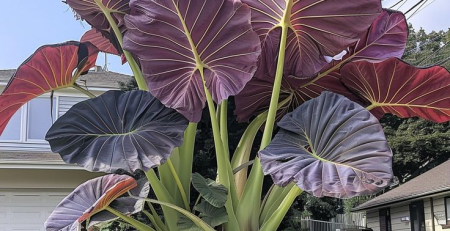
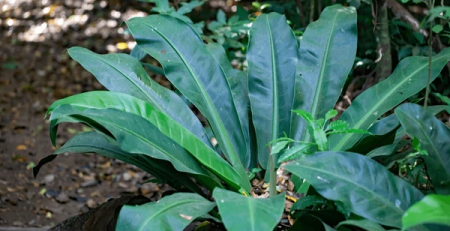
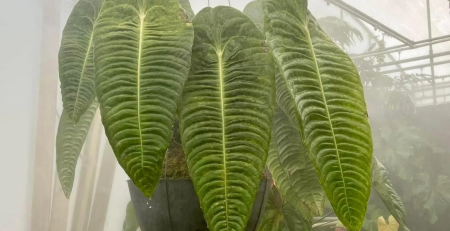
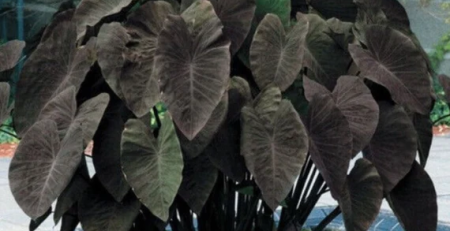
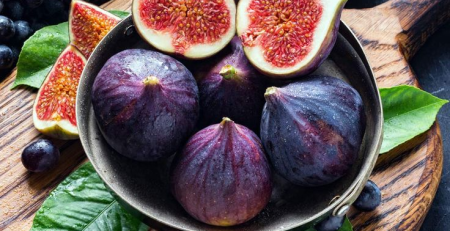
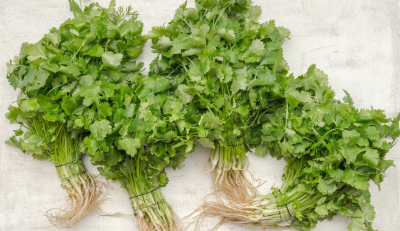

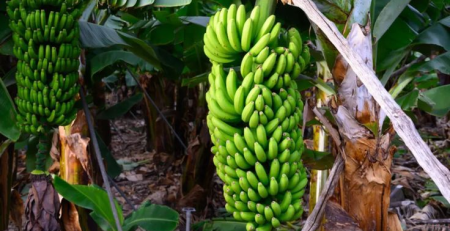

Leave a Reply